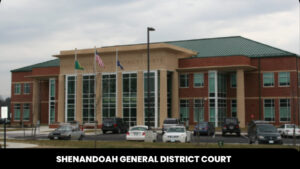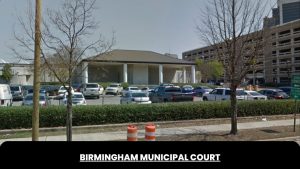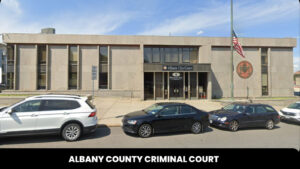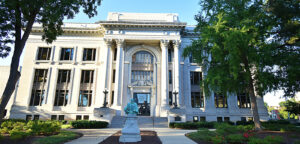District of Colorado
Overview of the District of Colorado
The U.S. District Court for the District of Colorado is the federal district court with jurisdiction over the entire state of Colorado. It was established in 1861, shortly after Colorado became a U.S. territory. The District of Colorado has court locations in Denver, Colorado Springs, Durango, and Grand Junction. It handles both civil and criminal matters that fall under federal jurisdiction.
History and Establishment
The District of Colorado was established by Congress on February 28, 1861, shortly after the Colorado Territory was organized. President Abraham Lincoln appointed two judges to serve on the new court: Benjamin F. Hall of Colorado as Chief Justice, and Samuel H. Elbert of Missouri as Associate Justice. The court officially opened on October 17, 1861.
For the first two decades, the District of Colorado handled very few cases. But the population boom during Colorado’s mining era led to a major increase in the court’s caseload in the late 1800s. Additional judges were appointed over time to handle the growing docket. Today, the District has 19 authorized judgeships, including 12 permanent district court judges and 7 magistrate judges.
Geographic Boundaries
The District of Colorado spans the entire state of Colorado. With over 104,000 square miles, it is one of the largest federal judicial districts in the United States.
Colorado constitutes a single judicial district. It is not subdivided into divisions. The District Court has jurisdiction over all counties and locations within the state.
Court Locations
The District of Colorado has courthouses in four cities:
- Denver – Alfred A. Arraj United States Courthouse
- Colorado Springs – Wayne Aspinall U.S. Courthouse
- Durango – La Plata County Courthouse
- Grand Junction – Wayne Aspinall U.S. Courthouse
The main courthouse is the Alfred A. Arraj Courthouse in downtown Denver. This houses the offices of the Clerk of Court and the District Court’s central operations. Trials and proceedings are held at all four courthouse locations.
Key Facts about the District
Here are some key facts about the District of Colorado:
- Population (2020) – Approximately 5,773,714 residents
- Land Area – 104,094 square miles
- Authorized Judgeships (2022) – 12 District Court judges, 7 Magistrate judges
- Pending Cases (2020) – 3,811 total pending cases
- New Cases (2020) – 3,960 new cases filed
- Criminal Defendants (2020) – 1,758 defendants charged in 2020
Population and Demographics
Colorado has a diverse population of over 5.7 million residents. Key demographics include:
- 69% White
- 22% Hispanic/Latino
- 4% Black/African American
- 3% Asian
- 2% Two or more races
The largest urban areas are the Denver metro and Colorado Springs metro regions. However, around 33% of Colorado’s population lives in rural areas.
Caseload and Types of Cases
In 2020, nearly 4,000 new cases were filed in the District of Colorado. At year’s end, around 3,811 total cases remained pending.
The largest number of new cases were civil cases (2,202), followed by criminal cases (1,758). The District saw a dip in new case filings during 2020, likely due to the COVID-19 pandemic.
Common types of cases include:
- Civil rights
- Labor and employment
- Contract disputes
- Social security appeals
- Robbery and drug offenses
- White collar crime
- Immigration violations
Notable Cases and Landmark Decisions
The District of Colorado has presided over many high-profile cases that have shaped legal history, including:
- Brown v. Board of Education – The District Court ruled on this landmark desegregation case before it reached the Supreme Court.
- Keyes v. School District No. 1 – Changed how U.S. courts determine segregation in schools.
- Romer v. Evans – Ruled that Colorado’s Amendment 2 was unconstitutional, a major gay rights decision.
- United States v. Nacchio – Conviction of former Qwest CEO for illegal insider trading.
- Columbine Massacre Lawsuits – Multiple lawsuits filed against school districts and law enforcement agencies.
District Leadership and Governance
The District of Colorado is led by the Chief Judge, U.S. Marshal, and U.S. Attorney.
U.S. Marshal
The U.S. Marshal for the District of Colorado is Kirk M. Taylor. The Marshal’s office provides security for court proceedings, manages seized assets, transports federal prisoners, and apprehends fugitives.
U.S. Attorney
The U.S. Attorney is the top federal prosecutor for the District of Colorado. The current acting U.S. Attorney is Cole Finegan. The office prosecutes federal crimes and represents the United States in civil cases.
Chief Judge
The current Chief Judge of the District Court is Philip A. Brimmer. The Chief Judge serves a 7-year term and oversees administration of the court.
Magistrate Judges
There are currently seven active Magistrate Judges who handle preliminary criminal matters, pre-trial civil cases, and other duties as assigned by the District Court judges.
Court Operations and Proceedings
The District of Colorado conducts civil and criminal proceedings in accordance with the Federal Rules of Civil and Criminal Procedure.
Clerk of Court
The Clerk of Court maintains court records, provides information to attorneys/litigants, and supports all administrative operations. Jeff Colwell is the current Clerk.
Local Rules and Procedures
Parties should consult the District of Colorado’s local rules for specific filing and formatting requirements. The full local rules are available on the court’s website.
Jury Selection and Service
Jurors are randomly selected from driver’s license and voter registration lists. The court mails prospective jurors a qualification questionnaire to complete. Chosen jurors serve for at least one month.
Fees and Costs
Filing fees vary based on the type of case. For civil suits, the fee is $400 to file a new case. There are also transcript fees and other costs associated with litigation. Indigent parties can request a waiver of most fees.
In summary, the District of Colorado handles all federal cases arising in Colorado and has a long history dating back to the 1800s. With locations across the state, this district court oversees a heavy caseload and diverse judicial operations. The court has shaped significant constitutional and civil rights precedents over the years.
Frequently Asked Questions
How many federal judges serve on the District Court?
There are currently 12 active District Court judges and 7 Magistrate judges authorized for the District of Colorado.
What types of cases are heard in the District Court?
The court handles both civil and criminal matters falling under federal law. Common cases include fraud, immigration violations, labor disputes, personal injury, and civil rights suits.
Where is the main courthouse located?
The Alfred A. Arraj United States Courthouse at 901 19th Street in Denver serves as the District’s main courthouse. This houses the District Court clerk’s office and administrative operations.
What is the difference between a District Court judge and a Magistrate judge?
District Court judges are appointed by the President and confirmed by the Senate. They handle all phases of federal cases. Magistrate judges are appointed by the District Court judges to handle preliminary criminal duties and matters referred by District judges.
How can I access public court records for the District of Colorado?
Many records can be accessed through the Public Access to Court Electronic Records (PACER) system online. You can also visit the Clerk’s office or request records by mail.




